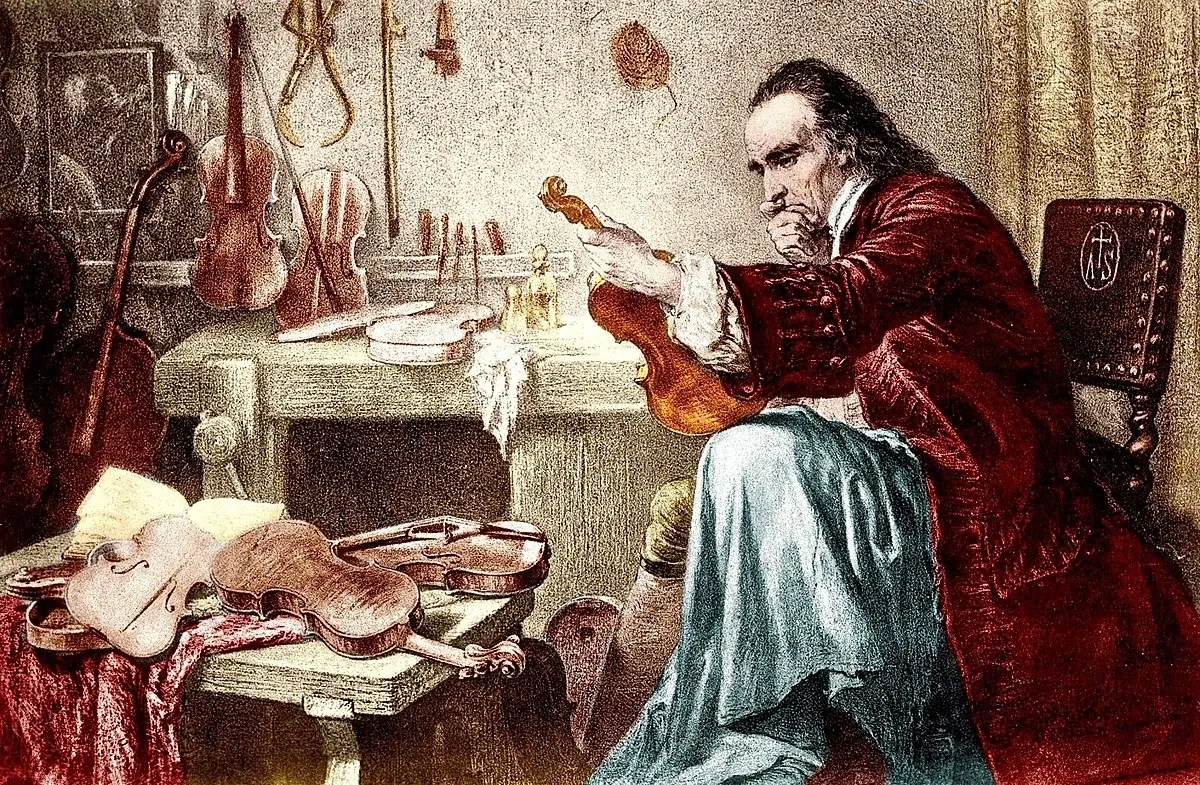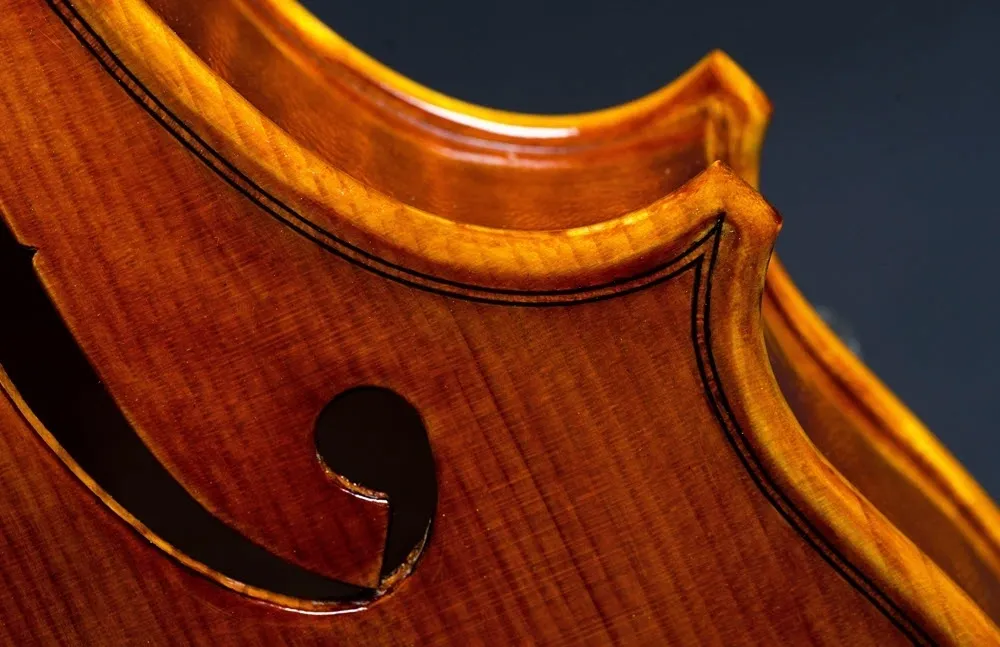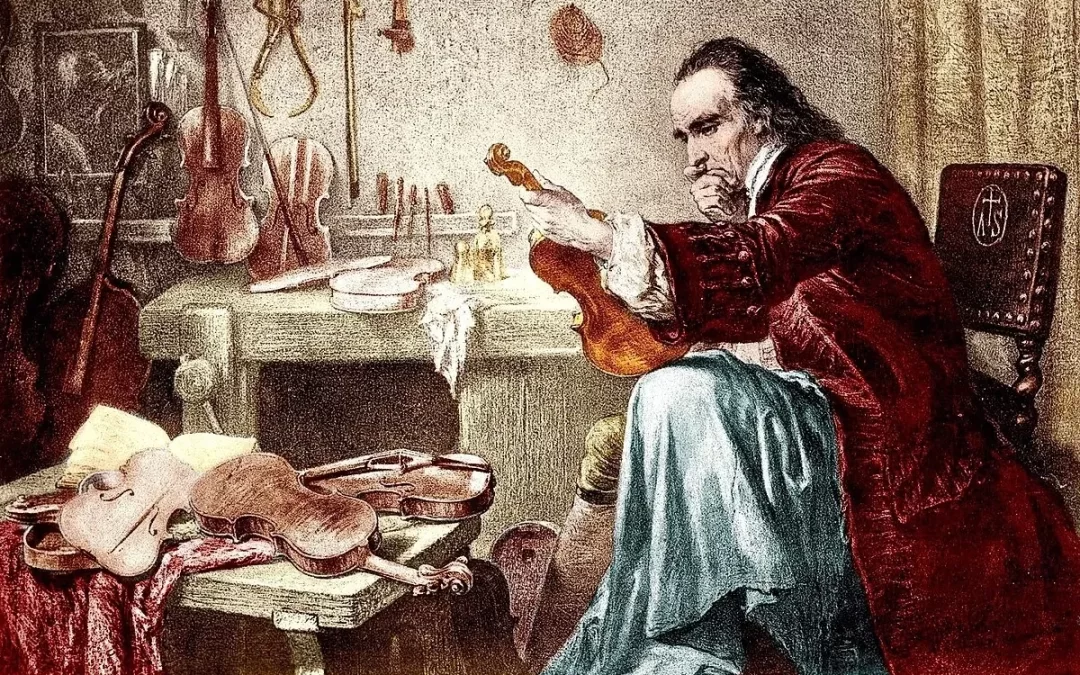
An Original Stradivarius Violin

Green-Tipped Spires in Cremona, Italy
His tutelage is also a point of dispute, as there exists a label on an early violin that reads, “Alumnus Nicolai Amat, faciebat anno 1666,” basically calling him a former student of Nicolo Amati, scion of the famed Casa Amati (House of Amati) who were known as master luthiers of Cremona. Luthiers are makers of stringed instruments, which is eventually what Stradivari became. He is known to have created 1,116 stringed instruments in his lifetime, 960 of which were violins.

Antonio Stradivari in his Violin Workshop
Stradivari may have also started as a simple woodworker, which would help explain his unique approach to violin crafting. The third possible teacher is a man named Francesco Pescaroli, a woodworker Stradivari shared a house with during his younger years. The truth is probably somewhere in there, but it makes for a fantastic segue into what actually makes a Stradivarius violin so unique.
Some known characteristics are that unmistakable red varnish I mentioned earlier, as well as the black edging and wide corners. Not to mention the broad edges one would notice as they taper out only slightly.
This, however, is only superficial. No, the real magic emanated from the soundbox itself. The very vibration that was birthed into soundwaves as the rosin-coated hair of the bow was dragged across the strings to allow for that most wonderfully transcendent of sounds. Music.
This is either down to the natural elements of the wood itself, or perhaps the designs used by Stradivari. For example,”…in 2003 scientists from the Columbia and Tennessee claimed reduced solar activity in the 17th Century may be the reason for the Stradivarius sound.” (BBC) They hypothesized that the wood from the trees itself was the reason for the famed Stradivarius sound. Their claim is that colder winters and summers made for slower tree growth, meaning that the wood itself was denser and allowed for superior acoustic qualities. In 2006, it was chalked it up to a chemical treatment the wood was subjected to with the aim of killing worms and fungi. Still others have even posited that the wood was in fact ancient wood sourced from crumbling abbeys and ancient old churches dating back to the early medieval era. Whether it was any of these or the classic red varnish the wood was coated with, it is difficult to say for certain. Most violinists and Stradivari lovers guffaw at these propositions, believing it all an attempt to grab at straws.
They say it all comes down to the genius of Stradivari himself.

Purfling Example. The Grooves Carved Into the Edge Of the Violin
Many other experts believe that the sweet sound produced by the Stradivari violins is the result of the elongated “f” holes, which are the holes in the side of the violin designed with the intention of producing more sound. Regardless, by around 1700, Stradivari had entered his golden age of violin crafting, and all violins produced between 1700 and 1725 are rumored to be worth more in the collectors markets.
In the end, the secrets of Stradivari and his violins remain a mystery and source of wonder for us all to marvel at, both in terms of physical and acoustic beauty. He took his secrets with him, but accrued a truly large amount of wealth in his lifetime, with few men in Europe, let alone Italy, having deeper coffers. A poetic symmetry to the absurd value we still place on his craftsmanship today, with so many willing to bid at insanely high prices just to possess one, and others having been murdered for owning one. (A VERY interesting story that unfortunately I don’t have time for, but if you’re interested I highly recommend researching it.)
It begins and ends in Italy with this musical genius, as it does with geniuses of many other flavors. He passed away in 1737, leaving much of his wealth to his two sons, giving them opportunities he never had.

